Atomic Number 25… Sounds Like A Song
What is an activator for more than 35 different enzymes in plants? What aids in making superoxide dismutase? What helps to put the green in your leaves? Any guesses???
Manganese!
Manganese isn’t one that we hear a lot about, but it’s actually pretty essential to plant growth. Do you all ensure to supply it? I mean… I do now. The last few years, umm, not so much to tell the truth. It was more of an unrecognized side bonus of applying things for other reasons if anything.
I was reading this old blog post by John Kempf that talked about hidden hunger symptoms in plants for manganese. In that post, he had a picture of cotton leaves— dark green with lighter veins— and it struck me how similar they look to the coloration of fig leaves. This was the picture here:
Do you see the lighter veins? Yeah, that’s manganese deficiency. A subtle one, but still deficient. Interesting, huh?
This statement was made along with it: “The symptoms of subtle manganese deficiency have become so commonplace today we don’t recognize them as anything outside of the ordinary.”
And also this: “When plants have adequate levels of manganese, the leaf veins will be the same shade of green as the area between the veins.”
He also mentioned that once you begin looking, you can see this almost everywhere. Most plants do not have light colored midribs in their genetics, meaning, they aren’t supposed to be light colored at all. They will darken with sufficient manganese.
Color me mind blown! 🤯 He was so right, now I do see it everywhere!
Annoyingly, I see it in my fig trees.
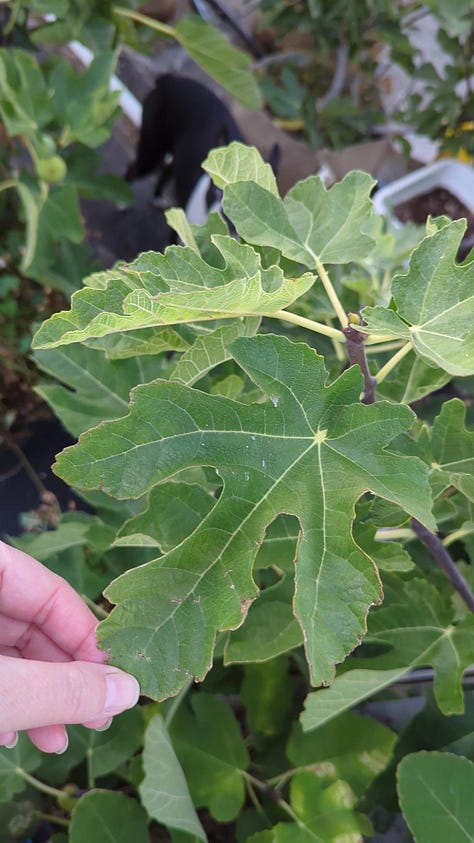
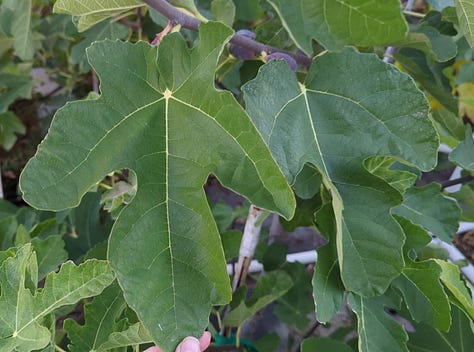
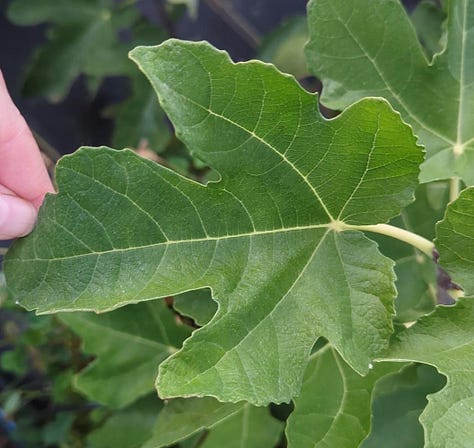
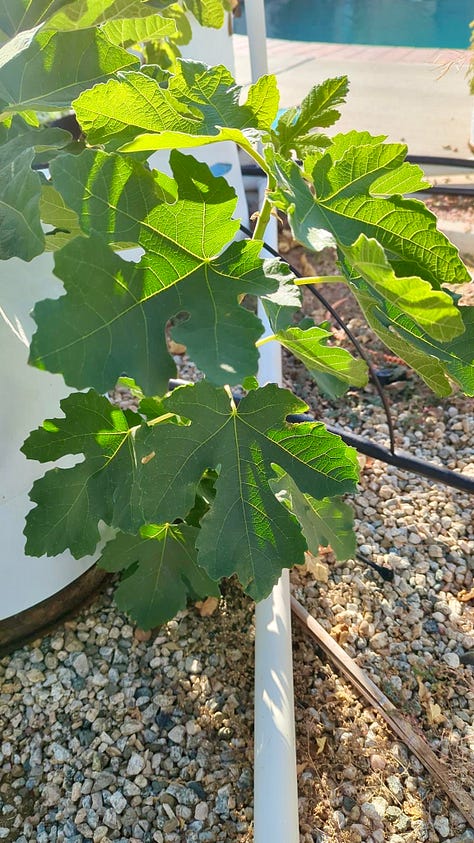
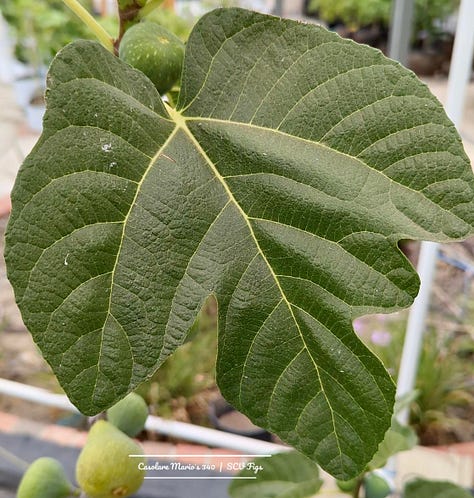
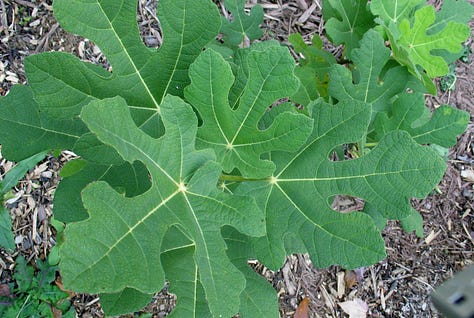
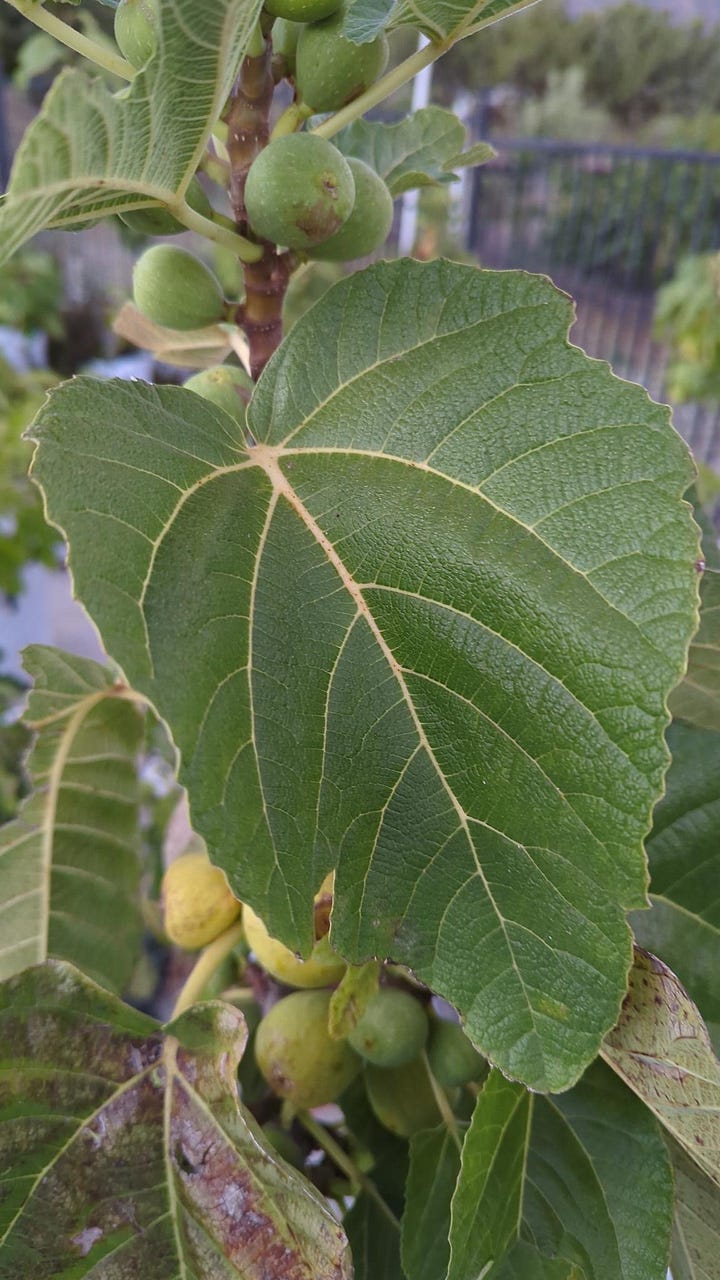
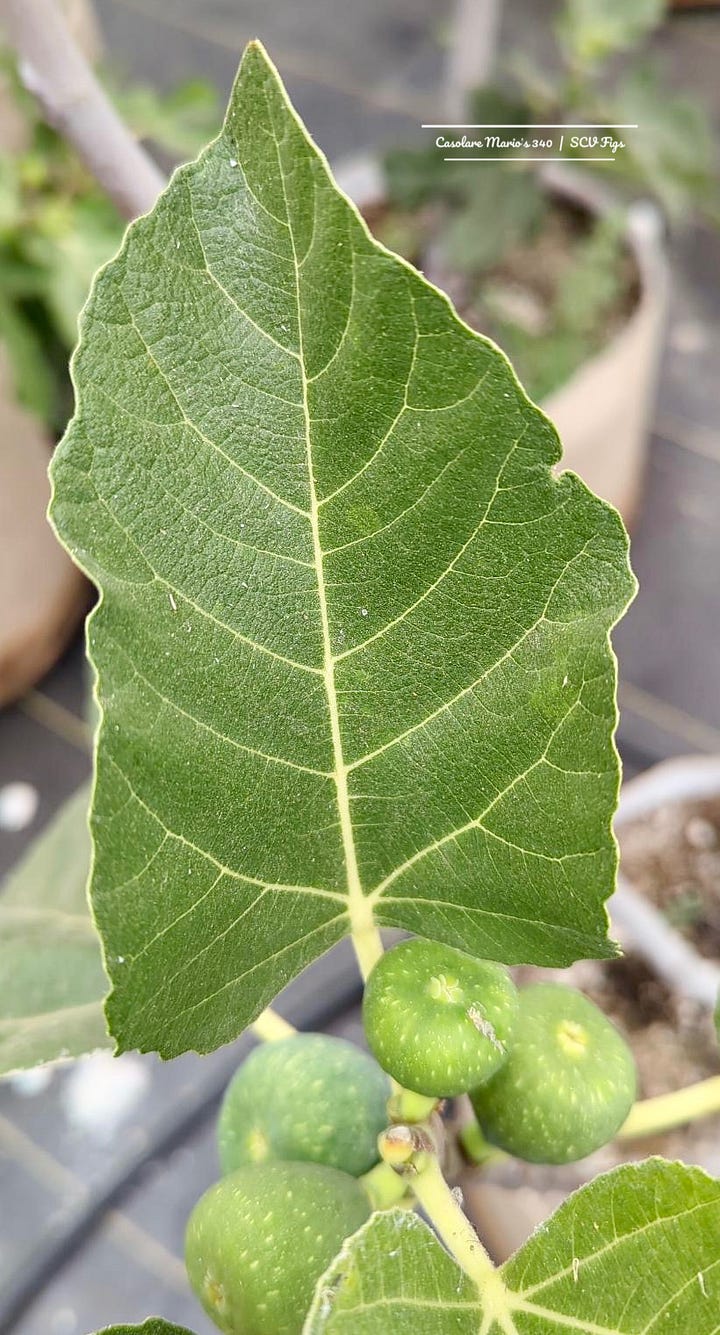
The kicker is that most agricultural soils do contain adequate levels of manganese, it is just locked up and not plant available because of oxidation, lack of biology, and lack of mobility. So you can apply ALL the manganese and have little to zero response because it can’t be processed. Tricky little bugger!
… Well, it is considered one of the micros… So why should we care?
Why manganese matters…
Manganese is essential to many of the basic and immunological functions of a plant. Without it, a plant cannot do the first steps of photosynthesis, it cannot form ATP, regulate potassium, activate enzymes, transform sugars, and properly respond to stress. It is also required to form superoxide dismutase which protects and detoxifies plants and removes free radicals. This means that the highest levels of immune functioning are absent without proper amounts of manganese.
Photosynthesis
“When water is absorbed from the soil, and used for photosynthesis, the first step in the process is that the water molecule needs to split into H and OH, hydrogen and hydroxyl. This process is called water hydrolysis. Without this crucial first step, the photosynthesis process is blocked or greatly reduced. The water hydrolysis process is completely dependent on manganese to function. The macro ingredients needed for photosynthesis are chlorophyll, sunlight, water, carbon dioxide, and manganese. Even if we have generous levels of the first four, when manganese is low, it becomes the bottleneck that slows down the photosynthesis process,” states John Kempf.
Did you catch that manganese is actually a macro for this process? Macro in need, micro in dose! This is why the veins are a lighter color in low-level manganese deficiency and why larger portions of the leaf are paler than the veins in high-level deficiencies — because photosynthesis has been limited.
“Manganese is the element of life… [It] brings the electrical charge into the seed, creating the magnetic force to draw the other elements into the seed.” — Arden Anderson, Science In Agriculture
Transforms sugars
If you remember, we once talked about how a high Brix plant is resistant to insects because plants contain different concentrations of different carbohydrates at various levels of plant health. For a healthy plant, all photosynthates and reducing sugars, (such as glucose and fructose,) should be converted to non-reducing sugars (such as sucrose) in each 24-hour photoperiod. If a plant is deficient in manganese, it can’t store glucose and fructose as sucrose, so these plants become very attractive to pests and pathogens, such as aphids, because they detect that high amount of reducing sugar. If those sugars are converted to sucrose, that attraction is not there. Manganese is a critical factor for the sucrose-phosphate synthase enzyme that converts glucose and fructose into sucrose for storage.
Another problem with the lack of that conversion is that these reducing sugars will also come out in root exudates which attract specific microbes linked to root rot. This is very interesting to me because many newly rooted fig cuttings show some symptoms of manganese deficiency. (In fact, deficiencies appear first on younger leaves.) So how much of that is linked to those failed cuttings that ended up with rotting roots?
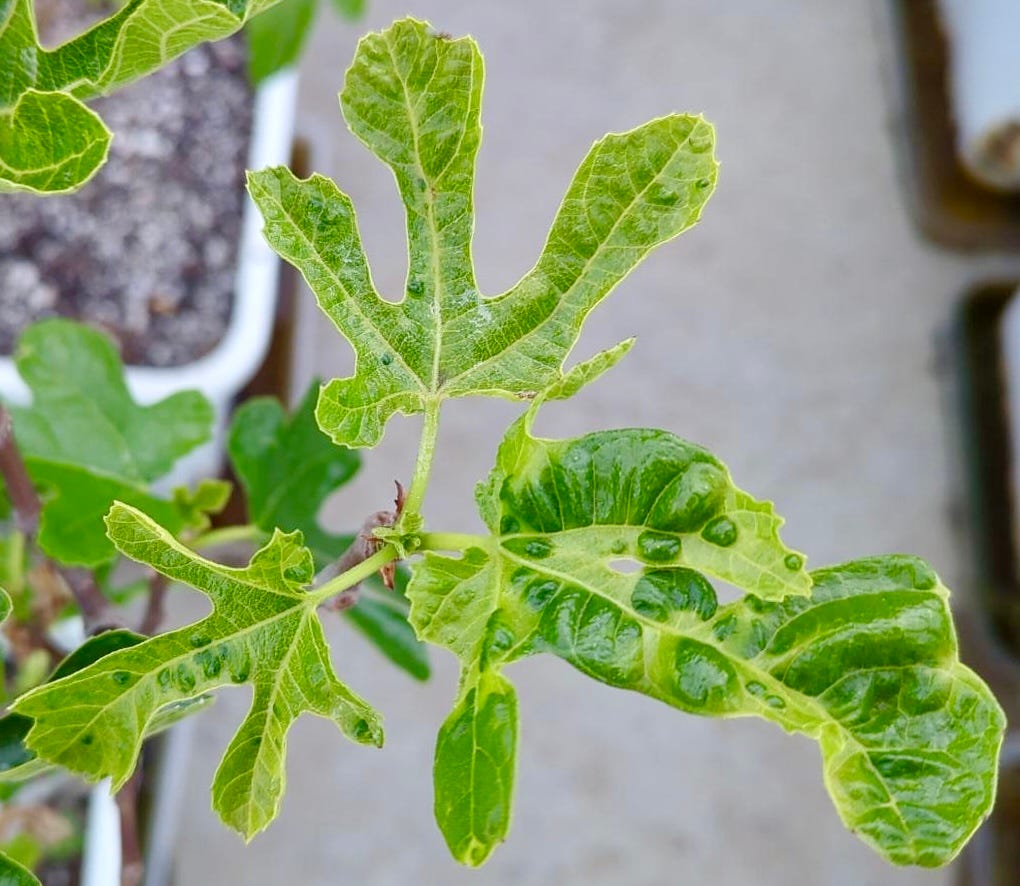
Immune functioning
Many pathogens use manganese oxidation as a virulence factor. These organisms can only create an infection in the correct environment, and lack of manganese is that environment. If they’re unable to oxidize manganese, they just become benign saprophytes in the soil. Having adequate availability of reduced manganese is very critical for resistance to disease and other physiological functions.
One of a plant’s defense mechanisms for free radicals is the antioxidant superoxide dismutase (SOD). SOD is essential to a plant for handling environmental stressors, such as drought, flooding, heat, cold, excessive light, and pollution. Manganese plays a significant part in the formation of SOD.
Fruit quality
We’ve talked before about how calcium is very important for quality fruit and also how potassium excess can prevent absorption of calcium. Manganese is essential for regulating potassium to allow calcium to work properly. What you may not know is that having proper amounts of manganese for that process can also affect fruit size.
Potential fruit size is determined during the cell division period immediately after pollination, (in fruits that require pollination.) This process can last for 5 to 40 days, depending on the crop, though it generally averages at 10-14 days. During this time, the cells are rapidly dividing in the forming fruit. This cell division period is what determines how many cells each fruit will get. After all of the cells are formed, the process is then focused on filling each of those new cells with protein, sugars, and water.
Fruits that are tightly packed with more cells are firmer, store better, and are crisp and crunchy. (In fruits meant to be crunchy.) With more cells, fruits can also be much larger in size, they are more resistant to splitting and cracking, and other fruit qualities are improved as well.
The nutrient that is needed during the cell division time is calcium as it helps to form the cell membranes, so it has a bearing on the number of cells produced. As such, we want to provide a ready supply of calcium during this cell division process. This means fall applications of gypsum or limestone, not spring, because of the amount of time it takes for these to be plant available. Spring applications can miss the cell division window.
It also means having adequate manganese available. If it is low, calcium absorption can be poor during this crucial formation period. Could you imagine if you have excess potassium at this time blocking calcium? That would mean less cell formation and therefore poorer fruit quality, perhaps with more splitting. Manganese needs to be there to regulate potassium. This can also mean less fertilizer application at this time, not more, so that these two can do what they need to do without the other minerals interfering.
Alright, you convinced me, how do I get manganese in my plants?
I got you, fig friends. Manganese is one that is highly dependent on soil conditions for how available it is. Remember that many soils contain manganese, it just is in the unusable oxidized form. Eh-pH must be at the right levels and the right microbes really need to be present. Mycorrhizae is one that can enhance absorption. Glyphosate has been one of the inhibiting factors of manganese availability because it decreases the microbes that process manganese and it increases the microbes that oxidize it. So soil health is crucial for soil-applied manganese in order to regain balance.
To promote soil availability: Try to keep soil pH between 5-7, and follow the practices that keep soil voltage at 400 mV. Avoid waterlogging and avoid aerating the soil with tillage or other things. If you use nitrogen fertilizers, avoid nitrate and use ammonium which increases manganese availability due to its acidic nature.
For immediate needs: Because manganese can easily become unavailable in the soil, it’s usually better to deliver it through foliar sprays in reduced or chelated forms. Colloidal manganese in kelp is one of the easiest ways to get it. A nice foliar spray is 5 parts humic acid and 2 parts kelp (5:2). This spray can help a plant to create up to 50% more superoxide dismutase, likely due to the high manganese levels in kelp according to Matt Powers. This is great for rooting cuttings as well as it promotes root growth.
If you are into fermented plant juices, quack grass, sassafras, horsetail, and dandelion ferments are a few that have higher levels of manganese. Vinegar extractions of fermented fish remnants also can be higher in manganese.
Fermented nettle, fermented fish, and vinegar-extracted oyster shells also have decent amounts, though a little lower than the above. Blackstrap molasses also can have trace amounts and is a great input for plants.
In the rare case you should have symptoms of manganese toxicity, (which should not happen with the above inputs,) add organic matter to the surface and soil soak with a compost tea. This will buffer the pH and help to bind up the manganese. Manganese toxicity usually is only a problem in soils deficient in copper and zinc.
Keep in mind, manganese is antagonistic to iron, they both need each other but excess of either can affect the uptake of the other one. Copper and calcium are both antagonistic to manganese when in excess. So let’s use balance!
So now we know a little bit about manganese!
The good news is that all of those leaf pictures above were from previous years. Let’s see how this year’s end up, I’m working on it! Check out this one:
Looking pretty good, no? Interestingly, this one is from a seedling that sprouted in my yard. You may understand the connection with that depending on when this article goes out in relation to another… Publishing dates and all. But this gives a visual that greener leaf veins are possible on fig trees. Are you going to try to get greener with yours with a little atomic number 25? 😀
I don’t know why “Atomic Number 25” makes me think of the song “Love Potion No. 9”. I’ve had it in my head this whole time while typing up this article… Should I??? … Nah, not this time.
*
*
*
*
*
Because it also made me think of a sci-fi movie, so I did this instead!



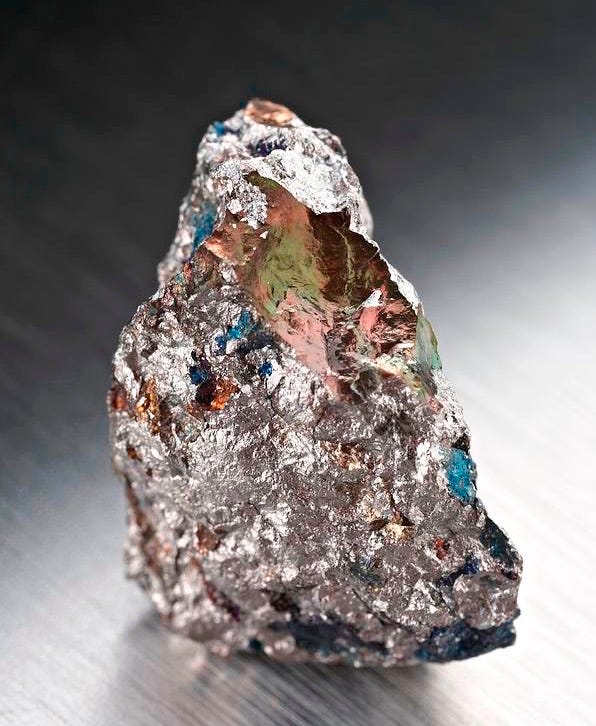
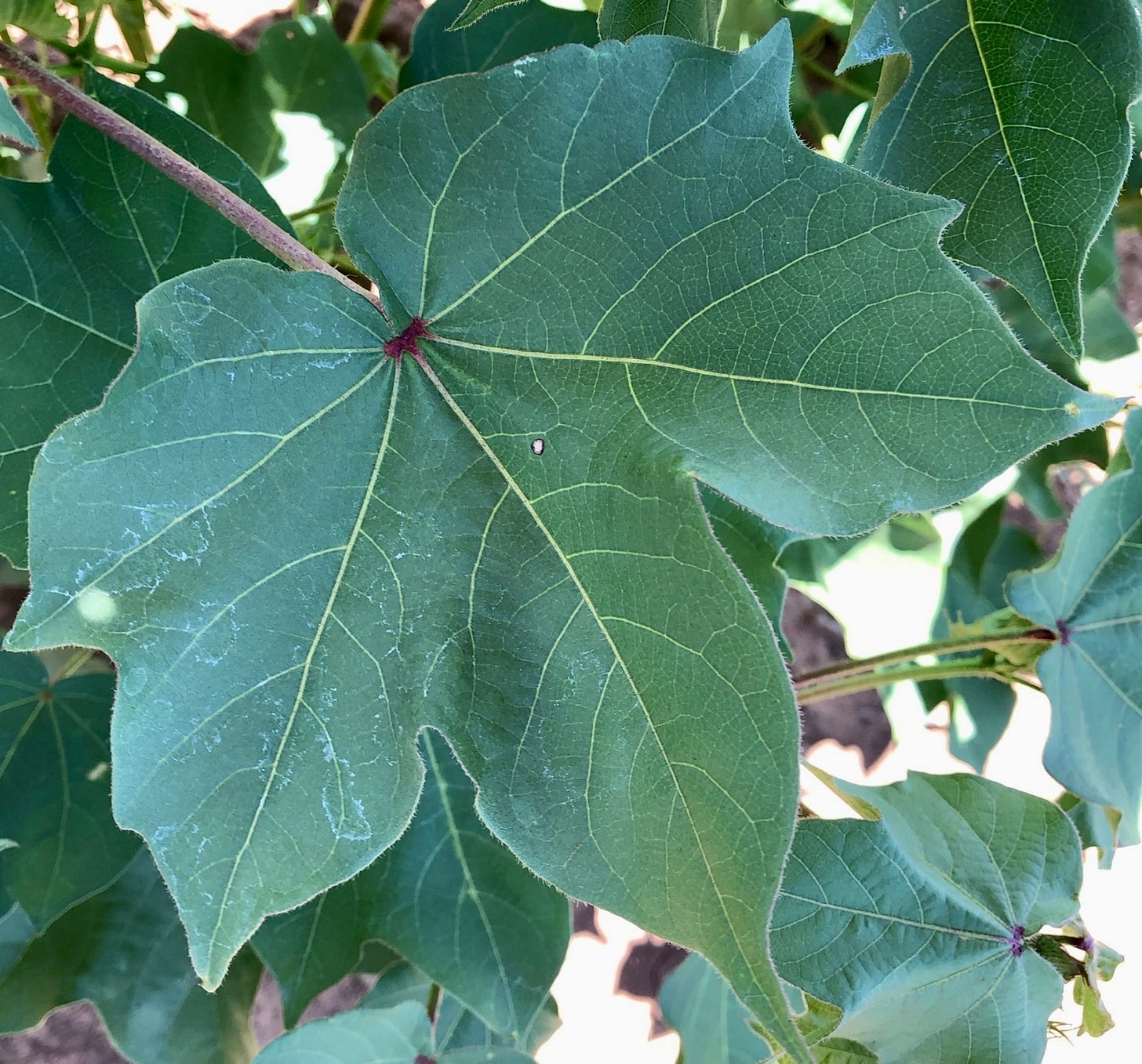
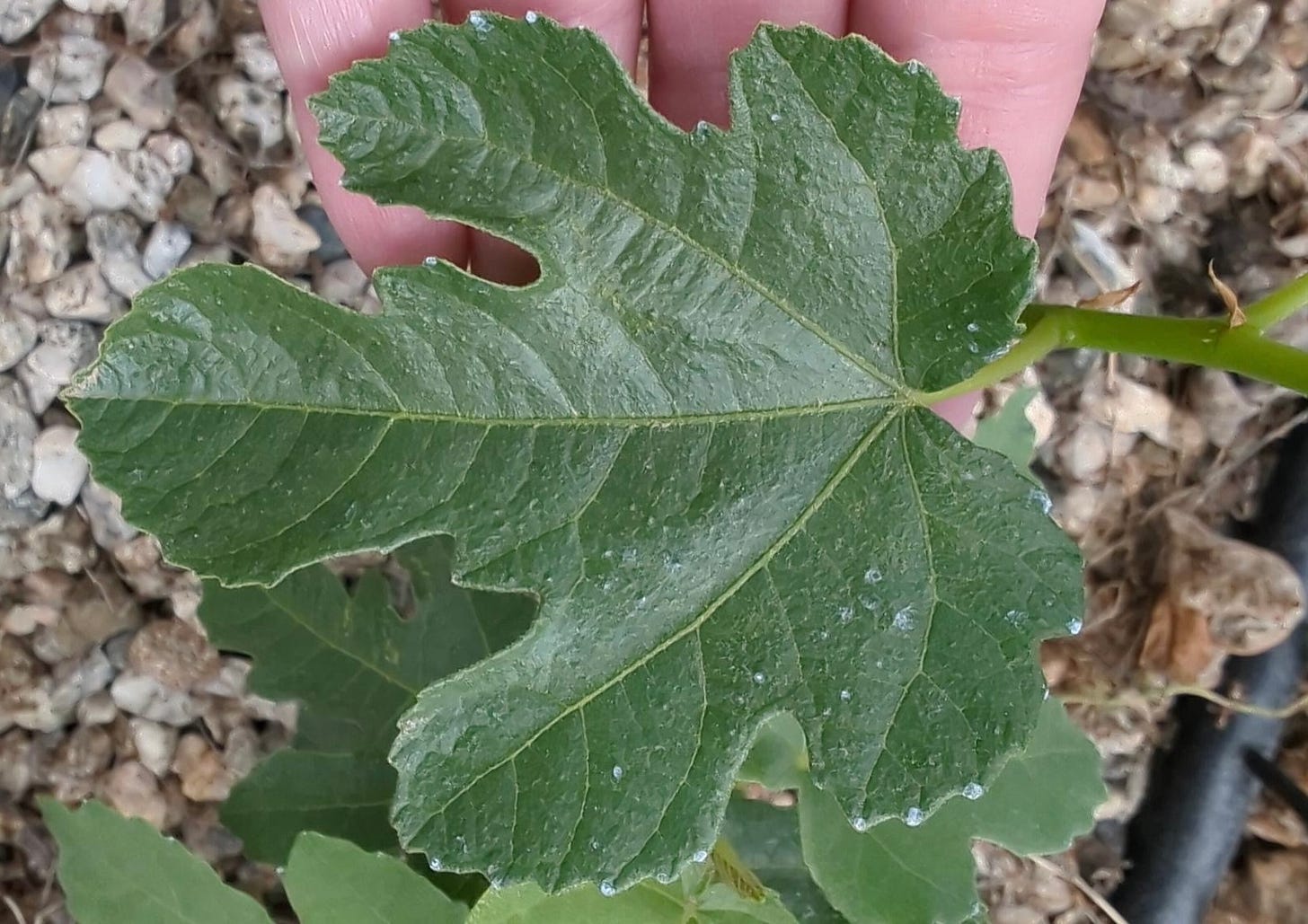
Raccoons 🦝 use to be the problem ,we’re screwed now Terminator thinks they’re …yummy!😂
So glad I have read your posts Fig Jam! It is dark right now but I will be checking my leaves tomorrow. Have used humic acid and kelp for a while, but only as a soil drench, not foliar feeding. Thanks again.